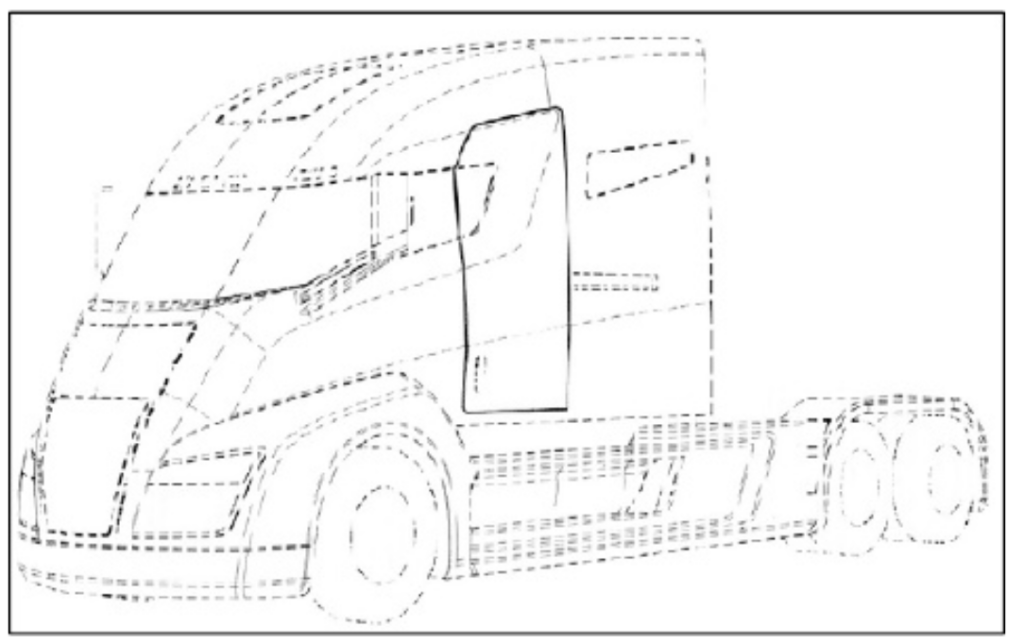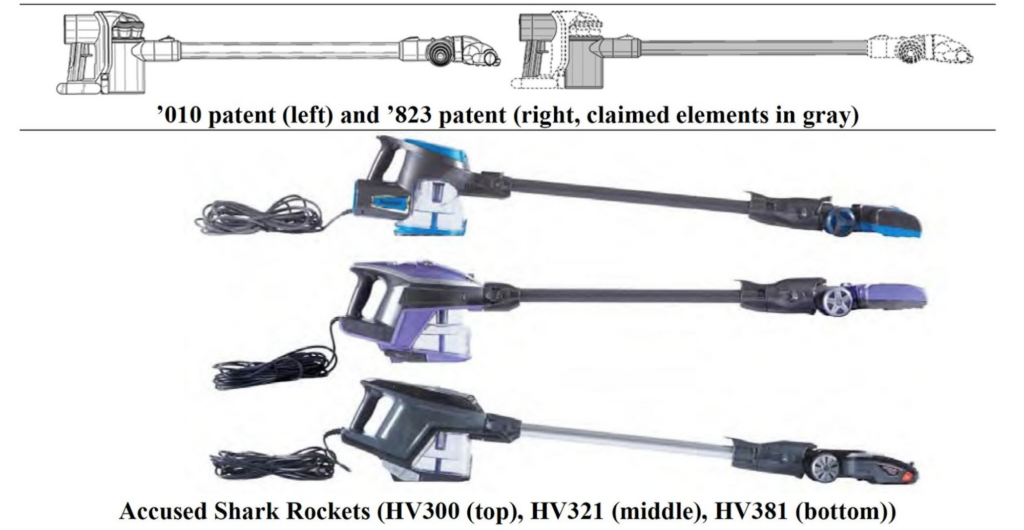Last week, Nikola sued Tesla over advanced technology trucks. But it isn’t about the technology. It’s not AC vs. DC or Edison vs. Tesla. It isn’t even about electric vehicles (or hydrogen-electric trucks, Nikola’s chosen technology).
It’s about the shapes of windshields and doors. It’s about design patents.
And Nikola got it all wrong.
A Flawed Concept
The key problem with Nikola’s case is that—contrary to many design patentAs distinct from a utility patent. A design patent protects only the ornamental design or appearance of an article of manufacture, but not its structural or functional features. An ‘article of manufacture’ is a broad term which may extend even to computer icons. Like utility patents, design patents must be nonobvious but this standard is harder to apply to designs. owners’ beliefs and desires—design patents protect specific designs, not design concepts. That misconception is an example of the “concept fallacy.”
So, rather than recognizing that its design patents cover a specific windshield shape, a specific fuselage shape, and a specific door shape, Nikola is operating under the assumption that the patents cover the concept of a wrap windshield, a streamlined fuselage, and a mid-entry door.
Wishing doesn’t make it so, and Nikola’s own complaint illustrates the problems with its arguments.
You Don’t Own The Wrap Windshield
Here’s a drawing from Nikola’s windshield design patentAs distinct from a utility patent. A design patent protects only the ornamental design or appearance of an article of manufacture, but not its structural or functional features. An ‘article of manufacture’ is a broad term which may extend even to computer icons. Like utility patents, design patents must be nonobvious but this standard is harder to apply to designs.. (As always, solid lines are the claim, and dotted lines aren’t part of the claim but just illustrate possible environments.)

And here’s the Tesla Semi truck. All Tesla images are taken directly from Nikola’s complaint.

Different curvatures, a gentler rounding at the bottom right corner and a sharper one at the top. The Tesla windshield also exhibits a significantly larger difference between tallest and shortest portions, extending much further down the nose of the truck.
And that’s just the infringement argument. If you want to claim that your wrap windshield patent covers all wrap windshields, I think that Italian automaker Lancia (among many, many others) might have had something to say about that around 40 years ago.

The worst part is, this is probably Nikola’s best argument.
You Don’t Own Mid-Entry Doors
Nikola also asserted a claim directed to their door design patentAs distinct from a utility patent. A design patent protects only the ornamental design or appearance of an article of manufacture, but not its structural or functional features. An ‘article of manufacture’ is a broad term which may extend even to computer icons. Like utility patents, design patents must be nonobvious but this standard is harder to apply to designs.. Again, here’s Nikola’s patent:

And here’s Tesla’s actual door:

The door shapes are generally distinct from one another—for example, the Nikola door’s top is slanted upwards, while the Tesla door is essentially a simple rectangle with a small contoured section around a third of the way up.
But wait—there’s more. There’s something missing here.
Actually, there’s something that isn’t missing. Nikola’s door design has a notch in the top left corner. Tesla’s door… doesn’t. One door has five sides. One has four.
It’s really simple math—five doesn’t equal four. They aren’t the same design.
You Definitely Don’t Own Streamlining
Finally, Nikola has a design patentAs distinct from a utility patent. A design patent protects only the ornamental design or appearance of an article of manufacture, but not its structural or functional features. An ‘article of manufacture’ is a broad term which may extend even to computer icons. Like utility patents, design patents must be nonobvious but this standard is harder to apply to designs. on a particular fuselage shape. Nikola:

Tesla (flipped in order to make it easier to directly compare to the patent):

Nikola’s fuselage has a gentle sweeping curve that begins at the very point of the nose and eventually turns into an upward sloping section at the top. But Tesla’s design has a flat nose, which rotates into an uncurved slanted section before curving into a flat top section.
If they were faces, you’d think they might be third cousins at best—certainly not siblings or twins. They simply don’t have the same profile—they aren’t substantially similar.
An Increasing Problem
None of these are the same design, unless you’ve bought into the concept fallacy. This sort of over-reaching use of design patents seems to be becoming more and more common. Professor Sarah Burstein regularly tracks new examples of this sort of overreach. And it reaches everywhere—this isn’t just a problem in high tech industries. One recent example dealt with handheld vacuums. Dyson sued Shark.

Here’s the patent and the accused products
Again, we have real and meaningful differences – a straight ‘stick’ versus an angled one, the angle of the grip with respect to the stick section, and the shape of the canister section among many others.
Fortunately, in the Dyson case, the judge recognized the deficiencies in their case and granted summary judgment of non-infringement. But that case is headed to the Federal CircuitSee CAFC, where Shark will have to continue to defend itself from Dyson’s apparent belief that they own handheld vacuums with a ‘stick’ section and a canister, rather than a specific shape for those vacuums.
At Least Nikola Doesn’t Have Cupholder Design Patents
There’s one more issue that this case brings up. An area of intense argument in design patents deals with how you determine what the article of manufacture is—in fact, next week, Apple v. Samsung returns with a fourth trial entirely on the question of what the article of manufacture is. (More on that in a future post.)
But it’s also a relevant question for the Nikola case.
Each of these designs deals with a piece of a truck—the windshield, the door, the exterior of the fuselage. But design patents (unlike utilityAn invention must useful to be patentable. Very few inventions are invalidated as lacking utility. Perpetual motion machines, for example, are typically found invalid for lacking utility. patents) allow damages in the amount of the total profit on an article of manufacture to which the design is applied.
But here’s the big question—what is that article? Apple’s arguments in the Apple v. Samsung case (and similar arguments made by design patentAs distinct from a utility patent. A design patent protects only the ornamental design or appearance of an article of manufacture, but not its structural or functional features. An ‘article of manufacture’ is a broad term which may extend even to computer icons. Like utility patents, design patents must be nonobvious but this standard is harder to apply to designs. owners elsewhere) essentially state that the article of manufacture is the entire product. Here, if we use the same theory, the windshield design would entitle Nikola to Tesla’s total profits on the entire truck. At the extreme, a cupholder design or even the shape of a gas pedal could entitle someone to profits on the entire vehicle. Or, to take it one step further, a design patentAs distinct from a utility patent. A design patent protects only the ornamental design or appearance of an article of manufacture, but not its structural or functional features. An ‘article of manufacture’ is a broad term which may extend even to computer icons. Like utility patents, design patents must be nonobvious but this standard is harder to apply to designs. on the shape of an airplane armrest could entitle the design patentAs distinct from a utility patent. A design patent protects only the ornamental design or appearance of an article of manufacture, but not its structural or functional features. An ‘article of manufacture’ is a broad term which may extend even to computer icons. Like utility patents, design patents must be nonobvious but this standard is harder to apply to designs. holder to Boeing’s profits on an entire $100,000,000 airliner.
The design patentAs distinct from a utility patent. A design patent protects only the ornamental design or appearance of an article of manufacture, but not its structural or functional features. An ‘article of manufacture’ is a broad term which may extend even to computer icons. Like utility patents, design patents must be nonobvious but this standard is harder to apply to designs. total profits remedy was enacted in the face of a totally different world, both legally and practically. It was a world where design patents were used in completely different ways than they are today, and one where design patents on only part of a product weren’t available.
With these changes in law, and a world where increasingly complex products are composed of a multitude of individual pieces, maybe it’s time for Congress to revisit the total profits rule.

